Wild Ones Reading List
Have you discovered the Wild Ones Reading List? It’s a page from our national organization with links to recommendations, reviews, and purchasing information for books to satisfy your curiosity about why and how you should plant natives. There’s even a section for children’s books!
Here’s a link: https://wildones.org/wild-ones-reading-list/
Members of the Wild Ones Appalachian Highlands chapter (WOAH) are booklovers, too. Each month we feature a book review by one of our members. We’ve collected them here for your convenience.
WOAH Bookshelf

The Comfort of Crows: A Backyard Year
By Margaret Renkl, with illustrations by Billy Renkl
Review by Beth Merz
Sometimes Facebook does you a favor, like when a few months ago someone posted a link to one of Margaret Renkl’s New York Times opinion pieces. I clicked, read, and had to dig for more. The more I read her, and about her, the more connection I felt with her. Red dirt Alabama roots, Auburn University, grandmothers who gardened, love of woods, and observing what happens as one slowly shifts a subdivision lot into a real habitat.
The Comfort of Crows is Renkl’s third book, and I confess I haven’t read it through yet. It’s organized with weekly essays by season, with so much joy in each that I refuse to rush to spring and summer. They’ll be waiting for me. The book is a gorgeous collaboration between Margaret’s words and her brother Billy’s paintings and collages. Her backyard must be what many of us yearn to create and live with. Margaret’s observations focus attention on the tiny critters that overwinter in leaf litter, other critters that subsist on them, and all the next levels of critters that dine on those and on the native plants they evolved with. She shares her dismay with proliferation of lawns around her neighborhood, and sadness as foxes, raccoons, and opossums are left with less shelter and food. Her writing welcomes you into her own appreciation and stewardship of the marvelous natural web that indeed has a place for crows.
Go buy this book because you’ll want to take your time with Margaret’s backyard world and Billy’s exquisite illustrations!

Braiding Sweetgrass: Indigenous Wisdom, Scientific Knowledge, and the Teachings of Plants
By Robin Wall Kimmerer
Review by Mark Merz
My daughter recommended this book to me, and I usually listen when she’s excited about a book! It
was on her reading list for an environmental literature course at Virginia Tech while she was working on her
M.A. She was passionate about it, and, having read it, I am too!
We joined Wild Ones because we believe that even the small things we do make a difference. That’s
why we share our seeds and plants and nurture them in our home landscapes. In Braiding Sweetgrass, we not
only find someone who shares the conviction that what we do matters, but we meet someone who has spent
her life in personal and academic pursuit of wholeness in her relationship with the natural world. This
book—the story of her search for health in a damaged world—provides an example and a challenge for
readers to enter a deeper and more reverent relationship with the Earth. Her writing is informative and
inspiring. It is just the very thing we need at exactly this moment: hope and encouragement.
In this book you’ll read indigenous stories, personal memoir, and descriptions of natural processes in
natural places. You’ll read her reflections, analyses, and critiques on everything from conventional science
and citizenship to economics. If you haven’t already read Braiding Sweetgrass, consider adding it to your
New Year’s reading list!
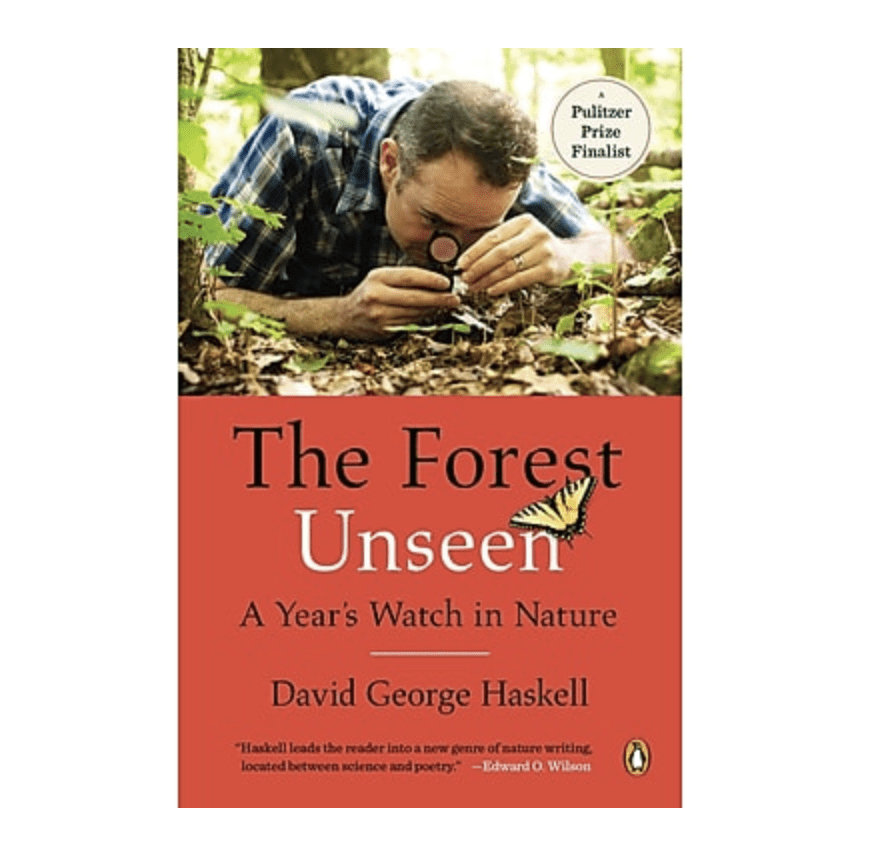
The Forest Unseen: A Year’s Watch in Nature
By David George Haskell
Review by Mellie Smith
We plant natives because we know the importance of preserving the
interconnectedness of life. We understand that co-evolution of flora and fauna is the process
that creates the diversity that is so important to our planet’s (and our!) survival.
From microbes in the soil to the stately oak that harbors so much life, each living thing matters to
the other. The Forest Unseen: A Year’s Watch in Nature by David George Haskell will transport
you to a deeper understanding of how intricate, and fascinating, these connections really are.
Haskell visited a one-square-meter patch of old growth southeastern Tennessee forest
several times per week for an entire year. His observations are written with a sensitive,
thoughtful and scientific eye, describing what he finds, week by week, month by month,
season by season.
The information he imparts is both powerful and eye-opening. I never knew I could care about the questing of ticks or be amazed at a horsehair worm turning a cricket into a zombie or cheer on the ants that plant our spring ephemerals as they feed their colonies. Haskell’s prose will draw you in with intimate details of this web of life. Yet, all this science is presented by Haskell in what has been described as “poetic” and “lyrical.” The
information is well researched and detailed, but it reads like a well-written novel. Originally
published in 2012 by Penguin Books, The Forest Unseen is still available through online
purchase or check your local library.

Bringing Nature Home: How You Can Sustain Wildlife with Native Plants
By Doug W. Tallamy
Review by Mark Merz
It’s no wonder the community of native plant enthusiasts is abuzz with this author’s name. With this book and others, in interviews and presentations, through active advocacy, and as co-founder of Homegrown National Park, he’s making the powerful case that, collectively, we can make a huge difference in our world by
choosing native plants over nonnative ones in our home environments.
In the book’s preface, Tallamy writes of a concept “so close to our noses we could not see it.” The notion that humans can begin reversing the habitat loss we’ve caused for the wildlife we’ve displaced by planting native plants is just such a concept. He is passionate and articulate in expressing the urgency for action. He’s effective at connecting readers to the science and ecology underpinning his call to action. And, the book is beautifully
illustrated with sharp, colorful photographs that express the wonder, beauty, and joy that arises from making space for nature in our home landscapes.
Here’s a link to: Homegrown National Park (https://homegrownnationalpark.org/) and one to an article on Tallamy in The Smithsonian (https://www.smithsonianmag.com/science-
nature/meet-ecologist-who-wants-unleash-wild-backyard-180974372/).
If you haven’t yet, catch up with Doug Tallamy!
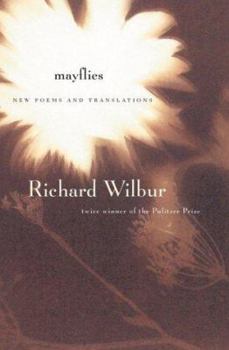
Mayflies
By Richard Wilbur
Review by Mark Merz
Did you know that April is National Poetry Month and that April 18th is Poem in your Pocket Day? You can find out more about that here: https://poets.org/national-poetry-month, but I thought it would be a good idea to share the title of a volume from a poet who, I think, is one of the most perceptive and affecting nature writers, Richard Wilbur.
Not all the poems in this collection are about nature. They’re not even all by him: some are his translations of other poets’ work. But I think you will respond to the way Wilbur’s writing is rooted in the senses—shape, color,
smell, touch, sound. Often, even when he’s not writing about the natural world, he still makes his subjects tangible through association with plants, animals, forests, wind, and water. Some of his poems work the other way, too, by reminding us of human consciousness and rootedness in nature.
Perhaps a good example comes from “Zea”. Here are a few short stanzas from the end of the poem:
Later there are days/Full of bare expectancy/Downcast hues and haze,
Days of an utter/Calm, in which one white corn leaf,/Oddly aflutter
Its fabric sheathing/A gaunt stem, can seem to be/The sole thing breathing.
Have a poem in your pocket on April 18th!
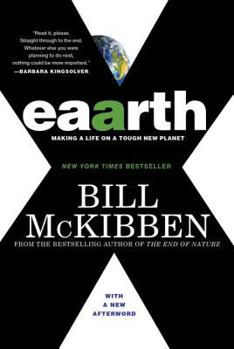
Eaarth: Making Life on a Tough New Planet
By Bill McKibben
Review by Mark Merz
Many of you already recognize Bill McKibben as a writer who, early in the movement to address Climate Change, bring the urgent predictions of climate science to a popular audience. He famously authored The End of Nature and was a founding creator of 350.org. This space is typically devoted more specifically to nature appreciation and native plant issues, but I believe it is appropriate for Wild Ones to consider how our efforts mesh with
fighting the crisis we face in global warming. What better way than to dive deeply into current
(well, the copyright date is 2011) climate data.
You will learn from the first half of the book that the situation we face is extremely dire. To explain what may seem to be an odd title, or even a typo on the cover page of a book by a major publisher, McKibben argues that we no longer live on the same planet on which most of us were born, Earth, the planet with a climate that was
remarkably stable for something like 10,000 years, the period during which atmospheric carbon dioxide levels were stable at 275 parts per million. It certainly shatters one’s worldview to face the grim statistics you will encounter here, but it is irresponsible to ignore them.
The second half of the book explores, with a measure of hope, the ways our culture must adapt to life on Eaarth. Everything will need to be decentralized—renewable energy generation, food production. Solutions to meeting life’s most basic needs will necessarily become local (think town and neighborhood), even hyperlocal (think home and yard). I don’t recall that McKibben envisioned solutions for how to meet the needs of people globally displaced climate refugees, a problem necessarily requiring solutions involving national governments and international agencies.
It’s almost unutterably sad to think that if we had undertaken sooner some of the work
that will be required for human survival on Eaarth, we might have enjoyed a longer, richer life
on Earth with more of our nonhuman fellow passengers.

The Nature of Oaks: The Rich Ecology of Our Most Essential Native Trees
By Douglas W. Tallamy
Review by Melanie Smith
The man who has brought the science of native plants into our everyday lives has hit home
again with The Nature of Oaks, a lovely addition to his other best sellers, Nature’s Best Hope
and Bringing Nature Home. Focusing on a single genus, Quercus (the oaks), Tallamy begins in
October (because “that was when I decided to write this book“) and then proceeds month by
month for an entire year of oak biology, phenology, and the diverse ecology an oak tree brings
to any setting.
An oak tree is more than just acorns. Way more. In addition to providing the mast that is an
important food source for many native species, an oak creates an entire habitat of its own to
support thousands of insect lives, which in turn support hundreds of birds, and so on. Even the
dead leaves create the all important layer of habitat on the ground, and the root system may
grow 10 times more mass than the tree we can see!
As is typical of all Doug Tallamy’s works, the science he presents is well researched (often
by himself and his students) and is written as readable as a novel. The reader gets to know the
tree he and his wife planted himself, and around which this “story” is told, and by the second
chapter, I had plans to create my own oak forest. I bet you will, too.
The reader leaves this book not only feeling an affinity for this stately tree and all its kin, but
with a better understanding of the intricate processes which create a healthy, diverse habitat.
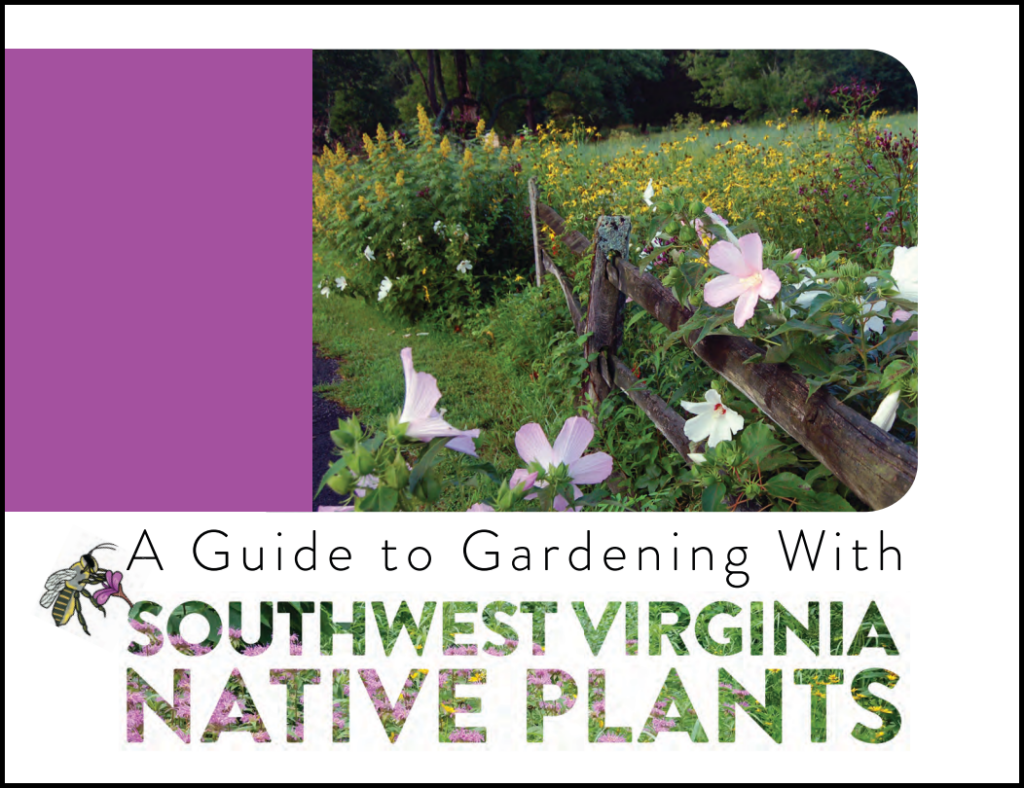
A Guide to Gardening with Southwest Virginia Native Plants
Design and Publication Management by Nicole Hersch and Bethany Peters
Review by Mark Merz
It isn’t often that we are able to offer a free digital version of the book we review, but this one is available here: A Guide to Gardening with Southwest Virginia Native Plants.
Whether you are new to the native plant movement or if you’ve been involved for
decades, it’s difficult to imagine a more valuable resource for a WOAH native plant gardener
than this one! You gain a crash course in basic ecology. You get extensive rationale for using
native plants in your landscape. There’s a geographical overview of our region within the state.
And there are sections in the guide that help you identify and accomplish different objectives
for your plantings. Do you want to accomplish traditional landscaping goals? Do you want to
garden for pollinators, bees, and butterflies? Are birds your primary interest? Do you want to
establish a deer resistant garden? Are you looking for ways to combat invasive plants? This
FREE book is a resource for supporting your work toward achieving all these goals using native
plants.
There is attention to seasonality, moisture and light requirements, canopy position, and
soil characteristics in each case, with specific plant recommendations. The editors don’t stop
there; they provide you with practical how-to advice and the reasons doing what they advise.
The heart of the book is its 75 pages of plant profiles, which are divided into 6 categories:
forbs, ferns, grasses, vines, shrubs, and trees. Each profile includes a verbal description, a
beautiful color photograph, scientific and common names, soil requirements, and graphics that
provide at-a-glance information on bloom period, light and moisture needs, size, and
ecosystem benefits. My wife, who is no novice gardener, has found enough usefulness in this
book to justify hours of study. She’s used it for planning, browsing, and for improving her
familiarity with what’s native in our region.
The design of this guidebook deserves praise, too. It uses color, headings, and graphics
to facilitate use; the Table of Contents in the front and the Index in the back will save you time
when you’re looking for specific information; and the bits of text selected for featuring are
thoughtfully chosen and effectively spotlighted.
While there was a limited printing of this publication, it was always the intention that
the primary form of access be digital, so click on the link above, and welcome to gardening with
southwestern Virginia native plants!

A Sand County Almanac and Sketches Here and There
By Aldo Leopold
Review by Mark Merz
From my first days in Forestry, I’ve encountered this book: Friends treasured it, and professors
assigned readings from it. When I met the woman I would marry, I found that it always lay somewhere close
at hand on a bedside stand or a living room table. Herself a retired forester, it’s one of the books she most
often gives as a gift. People who care about land management and conserving resources care deeply about
this book!
It was first published in 1949 by Oxford University Press. There are more than 2 million copies in
print, and (for the polyglot) you can read it in any of 14 different languages. It’s a book that inspired many
early environmentalists and profoundly shaped the course of the movement.
The first major section of the book is structured like a journal, beginning with January, working its
way through the months of a year, with an essay (or 2, 3, or even 4) per month. In each one Leopold vividly
and closely describes an encounter with the natural world of his family’s 120-acre home on the Wisconsin
River. These interactions become springboards for commentary, philosophy, and biology instruction by a
writer whose career included, after graduating from Yale Forestry School, work with the U.S. Forest Service,
teaching at the University of Wisconsin, and founding their Department of Wildlife Ecology. Leopold’s
writing is so captivating and persuasive that the reader becomes hungry for the same kinds of experiences
he describes. When Leopold describes the mating ritual of the woodcock in his “Sky Dance” essay from the
month of April, you are inspired to scout out your own “amphitheater in woods or brush,” where “in its center
there must be a mossy spot, a streak of sterile sand, a bare outcrop of rock, or a bare roadway.” The author
tells you exactly what time to be there on the first warm evening in April and every evening afterward until
June 1st. He tells you, too, what you’ll hear (peenting) and what you’ll see: “[T]he bird flutters skyward in a
series of wide spirals, emitting a musical twitter. Up and up he goes, the spirals steeper and smaller, the
twittering louder and louder, until the performer is only a speck in the sky. Then without warning, he tumbles
like a crippled plane, giving voice in a soft liquid warble that a March bluebird might envy.” It’s writing that
insists what’s happening outside is better than what’s happening inside: See it; love it; treasure it!
The copy of Sand County we have in our home has an introduction by Robert Finch (though I also want to see what Barbara Kingsolver writes in her introduction to the 75th anniversary edition). Finch describes the first of remaining two sections as possessing “an important change of tone, perspective and intent” with “language more elevated and less personal.” It’s in this section that Leopold’s message becomes urgent and serious as he contemplates humankind’s impact on the natural world and how are actions can be reformed. Finch describes the final section of the book as a culmination of Leopold’s environmental thinking in the shape of “brave public statements, directly addressing many of the political, cultural, social, and educational issues” … “for nothing less than a fundamental reform in our relationship with the land.”
This book is not just interesting and enjoyable to read; it’s important! You’ll be surprised by the
connections you make between Sand County Almanac and other nature and environmental writing and
speaking you read and hear. It’s been that influential!
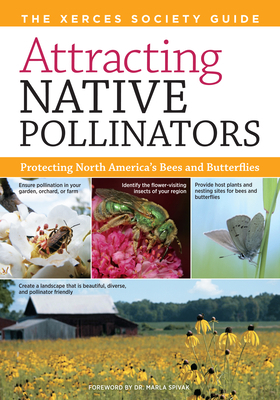
Attracting Native Pollinators
By The Xerces Society
Review by Mark Merz
This book has been sitting on my bookshelf for I don’t know how long. I’m not even sure where I got it, but there it was when I needed something new for inspiration during breaks from battling Johnson grass and dallis grass to make room for native meadow plants in my side yard. I’ve been doing this mechanically with a pickax, so it’s been slow and tedious work. It’s been a real pick-me-up to dip into the text and thumb through the pictures of this informational and beautifully photographed book.
The book is authored by senior staff from Xerces in collaboration with a San Francisco State
University biology professor, so the reader feels from the outset that passion for the topic combines with authoritative information to result in a guidebook that will make a difference in preserving pollinators. They divide the book into four main sections: Pollinators and Pollination, Taking Action, Bees of North America, and Creating a Pollinator Friendly-Friendly Landscape.
Pollinators and Pollination is the section that will build your basic knowledge about pollinators—why you should care, plant and insect biology, and how modern land use practices disrupt pollinator populations. Taking Action involves the how-to, nuts and bolts of how to apply what you’ve learned about plants and pollinators to actually manage your landscape encourage native pollinator species. WOAH members will be heartened to read that the first of four conditions to “support the greatest variety and abundance of pollinators” is “a diversity of plants, preferably native!” This section provides concrete advice for how to improve nearly every category of land use to make them more habitable for pollinators: which plant species to plant, site preparation, maintenance. The third section makes explicit the Xerces Society’s focus on native bee species. Even in the book’s preface, there is the explanation that, unlike butterflies, resources on native
bees haven’t been widely available to the public and that conservation methods for native bees will benefit other pollinators. So, it’s here, in the Bees of North America section, that you’ll find in-depth profiles of bee genera, along with nice photographs. You’ll get enough information to identify most bees to the genus level. The final section Attracting Native Pollinators is a collection of resources—diagrams of ways that different settings can be planted as pollinator gardens, regional plant lists, plant profiles for species that can be used
as pollen and nectar providers, and butterfly host plants.
My first encounter with the Xerces Society was during the 2017 Earth Day March for Science in
Washington D.C. Their demonstrators were eye-catchingly dressed as bumblebees and the signs they carried warned of a pollinator crisis, of which I was not then aware. But I paid attention, as I continue to pay attention to information on pollinators that is increasingly in the news and included in the broadening concerns of organizations like ours. Attracting Native Pollinators, because it will help tune my eyes, ears, and mind to a bustling and buzzing world of essential action, will make my native plantings even more interesting and important to me than they were!
You can find out more about the Xerces Society here: https://www.xerces.org/

Gathering Moss
By Robin Wall Kimmerer
Review by Beth Merz
Many of us have read and loved Kimmerer’s Braiding Sweetgrass, but perhaps are not as familiar with her earlier work, Gathering Moss. It isn’t a large book, less than 200 pages, with 20 chapters and numerous beautiful botanical drawings. I read Gathering Moss a few years ago and needed to pick it up again to write this review.
And…wow! The chapter called, “A Landscape of Change,” could have been written about our own southern Appalachian forests following the forces of hurricane Helene two weeks ago. Kimmerer tells of hunkering down with her children in their cabin as a massive microburst smashed through the Adirondacks in 1996. That chapter is a mini-course in northern hardwood forest succession through gap dynamics—and then translates down to the scale of moss colonies!
There is plenty of scientific detail about the varieties of moss species (22,000 worldwide), their minute structural components, habitat requirements, reproductive strategies, competition, cooperation, and their roles in supplying the needs of thousands of other species. It takes some concentration to appreciate that. But interspersed with science are stories that bring home just how connected we are with this minute, all but ignored, layer of life.
These stories are built on a foundation of tiny plants that have no common names. “Mosses don’t usually have common names, for no one has bothered with them.” But also, “In indigenous ways of knowing, all beings are recognized as non-human persons, and all have their own names.” Each chapter offers a story from Kimmerer’s perspective as researcher, teacher, investigator, indigenous seeker of relationships with non-human and human persons, and as a mother raising children to know and respect wild and mossy environments.
Kimmerer lets us know that there is knowledge waiting to be learned: “There is more living carbon in Sphagnum moss than in any other single genus on the planet.” And who remembers, or knew, about boundary layers? Where air movement right at the ground’s surface is stilled, where warmth from sunlight persists, where water vapor evaporating from logs and other surfaces is captured. And that decaying organic matter releases CO2, the raw material of photosynthesis. So the canopy gaps, whether at the height of mature forest trees or at the level of miniscule mosses, allow for change in species that occupy those spaces, and life goes on. In changed form perhaps, but life. An important piece of news for us, as we view our own blasted forest landscapes and altered river courses.
It’s good reading. Good science and good storytelling, as we expect from Robin Wall Kimmerer. And stay tuned for her next book coming out in November: The Serviceberry: Abundance and Reciprocity in the Natural World. (I can hardly wait!)
